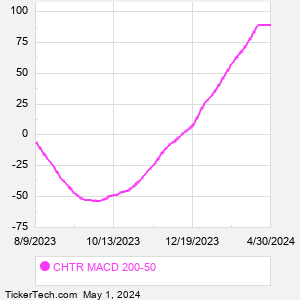Charter Communications is a holding company. Through its subsidiaries, Co. is a broadband connectivity company and cable operator through its Spectrum brand. Co. provides a range of residential and business services including Spectrum Internet, TV, Mobile and Voice. For small and medium-sized companies, Spectrum Business® delivers a suite of broadband products and services coupled with features and applications, while for businesses and government entities, Spectrum Enterprise provides fiber-based solutions. Spectrum Reach® delivers advertising and production for the media landscape. Co. also distributes news coverage and sports programming to customers through Spectrum Networks.
When researching a stock like Charter Communications, many investors are the most familiar with Fundamental Analysis — looking at a company's balance sheet, earnings, revenues, and what's happening in that company's underlying business. Investors who use Fundamental Analysis to identify good stocks to buy or sell can also benefit from CHTR Technical Analysis to help find a good entry or exit point. Technical Analysis is blind to the fundamentals and looks only at the trading data for CHTR stock — the real life supply and demand for the stock over time — and examines that data in different ways. One of those ways is to calculate a Simpe Moving Average ("SMA") by looking back a certain number of days. One of the most popular "longer look-backs" is the CHTR 200 day moving average ("CHTR 200 DMA"), while one of the most popular "shorter look-backs" is the CHTR 50 day moving average ("CHTR 50 DMA"). A chart showing both of these popular moving averages is shown on this page for Charter Communications. Comparing two moving averages against each other can be a useful visualization tool: by calculating the difference between the CHTR 200 DMA and the CHTR 50 DMA, we get a moving average convergence divergence indicator ("CHTR MACD"). The CHTR MACD chart, in conjunction with the chart of the moving averages, basically helps in visualizing how the moving averages are showing convergence (moving closer together), or divergence (moving farther apart). |



